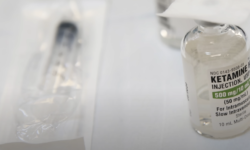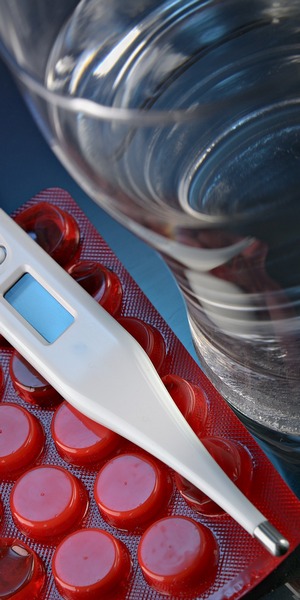The Lifespan Expectancy with Hypertension

Hypertension, also referred to as high blood pressure, is a chronic medical condition that affects a significant population worldwide. This ailment is identified when an individual consistently exhibits elevated blood pressure beyond the customary range.
The human heart propels blood throughout the body via the circulatory system, with blood pressure representing the force exerted by the blood against the walls of blood vessels. Blood pressure is measured using two values: systolic pressure and diastolic pressure. Systolic pressure indicates the force exerted when the heart contracts and pumps blood, while diastolic pressure indicates the force when the heart is at rest between beats.
According to the American Heart Association, normal blood pressure is defined as being below 120/80 mmHg, where the first number represents systolic pressure and the second number indicates diastolic pressure. Hypertension is typically diagnosed when blood pressure readings persistently remain at or above 130/80 mmHg.
Two types of hypertension
Primary hypertension
Essential hypertension, also referred to as primary hypertension, stands as the predominant type of hypertension. It manifests as elevated blood pressure without a discernible cause. This condition generally progresses gradually over multiple years and is influenced by a combination of genetic predisposition, age-related factors, and environmental influences.
- Genetic Factors: The development of primary hypertension is heavily influenced by genetic predisposition. Individuals with a familial background of hypertension have a higher likelihood of developing the condition themselves. Specific genetic variations can impact the regulation of blood pressure, eventually resulting in elevated readings over a period of time;
- Age: Primary hypertension commonly rises in conjunction with age. As individuals advance in years, the blood vessels undergo a reduction in elasticity and become stiffer, thereby leading to elevated blood pressure. Age-related alterations in hormone levels and kidney function can additionally contribute to the onset of hypertension;
- Environmental Factors: Various environmental factors contribute to the emergence of primary hypertension. These factors comprise:
| Risk Factor | Description |
|---|---|
| High sodium intake | Consuming excessive amounts of sodium can lead to fluid retention and increased blood pressure. A diet high in processed foods, fast food, and salty snacks contributes to sodium intake. |
| Low potassium intake | A diet lacking in potassium-rich foods, such as fruits and vegetables, may disrupt the balance of electrolytes in the body and contribute to hypertension. |
| Excessive alcohol consumption | Drinking alcohol in large quantities can raise blood pressure and increase the risk of developing hypertension. |
| Sedentary lifestyle | Lack of regular physical activity can contribute to weight gain, which is a risk factor for hypertension. Engaging in regular exercise helps maintain a healthy weight and promotes cardiovascular health. |
| Smoking | Cigarette smoking damages blood vessels and increases the risk of hypertension. Chemicals in tobacco smoke cause the arteries to narrow, leading to elevated blood pressure. |
| Stress | Chronic stress can contribute to the development of hypertension. Stress activates the body’s “fight or flight” response, causing blood pressure to rise temporarily. Prolonged stress can have a long-term impact on blood pressure regulation. |
The management of primary hypertension focuses on lifestyle modifications and, in some cases, medication. The following strategies are commonly recommended:
Intervention Description Reducing sodium intake Limiting the consumption of high-sodium foods and opting for low-sodium alternatives. Increasing potassium intake Including potassium-rich foods in the diet, such as bananas, oranges, spinach, and sweet potatoes. Adopting the DASH diet This eating plan emphasizes fruits, vegetables, whole grains, lean proteins, and low-fat dairy products while limiting sodium, saturated fats, and cholesterol. Engaging in aerobic exercise Activities like brisk walking, swimming, cycling, or dancing for at least 150 minutes per week. Strength training Incorporating resistance exercises, such as weightlifting, to improve overall fitness and cardiovascular health. Maintaining a healthy weight Losing excess weight can significantly reduce blood pressure levels. This can be achieved through a combination of diet and regular physical activity. Quitting smoking Breaking the habit of smoking is crucial to reducing the risk of hypertension and improving overall cardiovascular health. Practicing relaxation techniques Techniques like deep breathing exercises, meditation, yoga, or engaging in hobbies can help reduce stress levels. Getting enough sleep Prioritizing quality sleep to ensure the body has time to rest and recover.
In some cases, lifestyle modifications may not be sufficient, and medication may be prescribed to manage blood pressure effectively. It is essential to work closely with healthcare professionals to develop an individualized treatment plan that suits the specific needs of each patient. Regular monitoring of blood pressure and ongoing follow-up with healthcare providers are also crucial for long-term management of primary hypertension.
Secondary hypertension
Secondary hypertension is a type of hypertension that arises as a result of an underlying condition or external factors. Unlike primary hypertension, secondary hypertension has an identifiable cause. It tends to develop suddenly and often leads to higher blood pressure levels compared to primary hypertension.
Secondary hypertension can be caused by various underlying medical conditions, including:
- Kidney Disease: Disorders affecting the kidneys, such as chronic kidney disease, polycystic kidney disease, or renal artery stenosis, can disrupt the body’s fluid and electrolyte balance, leading to increased blood pressure;
- Hormonal Disorders: Certain hormonal imbalances can contribute to secondary hypertension. Conditions such as primary aldosteronism (excess aldosterone hormone production), Cushing’s syndrome (excess cortisol hormone production), and pheochromocytoma (adrenal gland tumor) can all lead to elevated blood pressure;
- Endocrine Disorders: Endocrine disorders, such as hyperthyroidism (overactive thyroid) or hypothyroidism (underactive thyroid), can affect blood pressure regulation;
- Sleep Apnea: Obstructive sleep apnea, a sleep disorder characterized by repeated breathing interruptions during sleep, has been associated with secondary hypertension;
- Coarctation of the Aorta: A congenital heart defect involving a narrowing of the aorta, the main artery carrying blood from the heart, can lead to high blood pressure in the arms but lower blood pressure in the legs.
Certain medications and external factors can also contribute to the development of secondary hypertension. These include:
Risk Factor Description Birth Control Pills Oral contraceptives, particularly those containing estrogen, can raise blood pressure in some individuals. Decongestants Over-the-counter decongestants, such as pseudoephedrine, can temporarily raise blood pressure. Nonsteroidal Anti-Inflammatory Drugs (NSAIDs) Some NSAIDs, including ibuprofen and naproxen, can cause elevated blood pressure levels. Medications Certain prescription drugs, such as corticosteroids, immunosuppressants, and some antidepressants, may contribute to secondary hypertension.
The management of secondary hypertension focuses on identifying and addressing the underlying cause. Treatment approaches may include:
Intervention Description Medication Adjustment If a specific medication is contributing to high blood pressure, adjusting the dosage or switching to an alternative medication may be necessary. Treating Underlying Conditions Targeting the underlying medical condition causing secondary hypertension is crucial. This may involve managing kidney disease, correcting hormonal imbalances, or addressing sleep apnea. Lifestyle Modifications Adopting healthy lifestyle habits can help manage secondary hypertension. This includes following a balanced diet low in sodium, engaging in regular physical activity, maintaining a healthy weight, limiting alcohol consumption, and managing stress levels. Monitoring and Regular Check-ups Regular monitoring of blood pressure and routine follow-ups with healthcare professionals are essential to track progress and make any necessary adjustments to the treatment plan.
It is important to work closely with healthcare providers to accurately diagnose and effectively manage secondary hypertension. Identifying and addressing the underlying cause is key to controlling blood pressure and reducing the risk of complications associated with hypertension.
Hypertension’s Impact on Lifespan

There is a direct correlation between hypertension (high blood pressure) and several life-threatening health complications. These complications include heart diseases, stroke, kidney disease, and vision loss. Let’s delve into each of these risks in detail:
- Heart diseases: Hypertension can contribute to various cardiovascular conditions. Some of the heart diseases associated with high blood pressure include:
- Coronary artery disease: This condition occurs when the arteries that supply blood to the heart become narrow or blocked, restricting blood flow. Hypertension increases the risk of developing coronary artery disease;
- Heart failure: High blood pressure can strain the heart, causing it to become weak or stiff over time. As a result, the heart cannot pump blood efficiently, leading to heart failure;
- Hypertrophy: Hypertension forces the heart to work harder to pump blood, which can result in the thickening of the heart muscle. This condition is known as hypertrophy and can lead to various complications if left untreated.
- Stroke: Stroke is a severe condition that happens when a part of the brain does not receive enough blood supply. Hypertension is the leading risk factor for stroke due to its impact on the blood vessels. High blood pressure puts extra pressure on the blood vessel walls, making them more susceptible to damage. This can lead to the formation of blood clots or the bursting of blood vessels, causing a stroke;
- Kidney disease: Hypertension can have detrimental effects on the kidneys. Prolonged high blood pressure can damage the blood vessels and filters in the kidneys, impairing their function. As a result, the kidneys may struggle to remove wastes and excess fluid from the body, leading to a condition known as kidney failure;
- Vision loss: High blood pressure can also affect the eyes and lead to vision problems. The strain and damage caused by hypertension on the blood vessels in the eyes can result in various eye conditions;
- Retinopathy: High blood pressure can damage the blood vessels in the retina, leading to retinopathy. This condition can cause blurred vision, vision loss, or even blindness;
- Choroidopathy: Hypertension can also impact the choroid, a layer of blood vessels in the eye. Choroidopathy can cause fluid accumulation and lead to vision disturbances;
- Optic neuropathy: High blood pressure can damage the optic nerve, which transmits visual information from the eye to the brain. Optic neuropathy can cause vision loss or even permanent blindness.
Hypertension poses significant health risks, including heart diseases, stroke, kidney disease, and vision loss. Regular blood pressure monitoring, a healthy lifestyle, and appropriate medical interventions are crucial in managing hypertension and reducing the chances of developing these life-threatening complications.
Life Expectancy Reduction Due to Hypertension-Related Complications
| Complication | Estimated Reduction in Life Expectancy |
|---|---|
| Heart Diseases | 5-20 years |
| Stroke | 5-20 years |
| Kidney Disease | 5-15 years |
| Vision Loss | Varies depending on severity and management |
Despite these potential complications, they are not inevitable. The risks associated with hypertension can be managed or even prevented with appropriate intervention.
Treatment and Lifestyle’s Influence on Lifespan

Proper management of hypertension, including both medical treatment and lifestyle changes, can significantly prolong a person’s life expectancy. Let’s explore these interventions.
Medical Treatment
Medical treatment primarily involves the use of antihypertensive drugs to control high blood pressure. The common classes of these drugs include:
- Diuretics: These medications help the kidneys eliminate sodium and water from the body, reducing blood volume and thereby lowering blood pressure;
- Beta-blockers: These drugs work by blocking the effects of the hormone epinephrine, also known as adrenaline. They cause the heart to beat slower and with less force, which in turn lowers blood pressure;
- ACE inhibitors: These medications inhibit the formation of a hormone called angiotensin II, which narrows blood vessels. As a result, the vessels relax and widen, reducing blood pressure;
- Calcium channel blockers: These drugs prevent calcium from entering the smooth muscle cells of the heart and blood vessels, causing the vessels to relax and dilate, and hence, lower blood pressure;
- Angiotensin II receptor blockers (ARBs): Similar to ACE inhibitors, ARBs block the action of angiotensin II, helping blood vessels relax and widen, which reduces blood pressure.
Alongside medication, regular monitoring of blood pressure and timely consultation with healthcare providers is crucial.
Lifestyle Adjustments
Adopting a healthy lifestyle can have a significant effect on controlling high blood pressure. Consider the following lifestyle adjustments:
- Healthy eating: The Dietary Approaches to Stop Hypertension (DASH) plan is often recommended for individuals with high blood pressure. The DASH diet emphasizes fruits, vegetables, whole grains, lean protein, and low-fat dairy. It also encourages reducing sodium intake;
- Regular physical activity: Engaging in moderate aerobic exercise for at least 30 minutes most days of the week can significantly lower blood pressure;
- Maintaining a healthy weight: Blood pressure often increases as weight increases. Therefore, losing even a small amount of weight if you’re overweight can have a major impact on blood pressure;
- Limiting alcohol: Moderate to heavy drinking can raise blood pressure and reduce the effectiveness of hypertension medications. It’s advisable to limit alcohol to moderate levels (up to one drink a day for women and up to two drinks a day for men);
- Avoiding tobacco: Every puff of cigarette smoke can cause a temporary increase in blood pressure. Plus, the chemicals in tobacco can damage your blood vessels, leading to an increase in blood pressure and the risk of heart disease;
- Managing stress: Chronic stress can be a contributor to hypertension. Practicing stress management techniques like yoga, meditation, deep-breathing exercises, and massage can help keep blood pressure in check.
Table 2: Impact of Lifestyle Adjustments on Blood Pressure
Lifestyle Adjustment Potential Impact on Blood Pressure Healthy Eating Can lower systolic blood pressure by 8-14 mmHg Regular Physical Activity Can lower systolic blood pressure by 4-9 mmHg Maintaining a Healthy Weight Can lower systolic blood pressure by 5-20 mmHg per 10 kg weight loss Limiting Alcohol Can lower systolic blood pressure by 2-4 mmHg Avoiding Tobacco Can prevent spikes in blood pressure and reduce long-term hypertension risk Managing Stress Can help maintain healthy blood pressure levels by improving overall wellbeing
The benefits of these lifestyle adjustments extend beyond just blood pressure control. They can significantly improve overall cardiovascular health, decrease the risk of other chronic diseases, and enhance quality of life.
Conclusion
The life expectancy of an individual with hypertension is heavily influenced by the management of the condition. It’s clear that through consistent medical treatment and significant lifestyle modifications, an individual can live a long, healthy life despite a hypertension diagnosis. Regular medical check-ups, adherence to prescribed medications, and embracing a healthier lifestyle are all essential steps in managing hypertension effectively.
Regular medical check-ups play a vital role in monitoring blood pressure levels, detecting any potential complications, and adjusting treatment plans accordingly. Adhering to prescribed medications, including antihypertensive drugs, is crucial in controlling blood pressure and reducing the risk of cardiovascular events. Additionally, adopting a healthier lifestyle, which includes a balanced diet low in sodium, saturated fats, and cholesterol, along with regular physical exercise, can contribute to blood pressure control and overall cardiovascular health. By incorporating these practices into their daily lives, individuals diagnosed with hypertension can defy the potential negative impact on life expectancy and enjoy a longer, healthier life.
FAQS
Hypertension cannot be completely cured, but it can be effectively managed through medications and lifestyle modifications. With proper management, an individual can lead a regular, healthy life.
If left uncontrolled, hypertension can lead to serious health complications, which can shorten life expectancy. However, with effective management, individuals with hypertension can have a similar life expectancy to those without hypertension.
Yes, regular moderate exercise is recommended for people with hypertension. However, it’s always advised to consult a healthcare professional before starting any new exercise regimen.
Uncontrolled hypertension can lead to various complications, including heart diseases, stroke, kidney disease, and vision loss.
While lifestyle changes significantly impact blood pressure control, some people may also require medication. The decision should be individualized, based on a person’s blood pressure readings and overall health risk factors.








